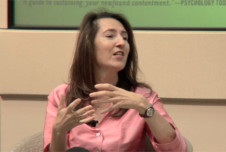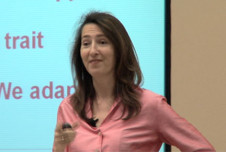Sonja Lyubomirsky’s book The How of Happiness offers readers more than a dozen everyday activities they can practice to become happier in the short and long term. Lyubomirsky compiled the list of activities after conducting and reviewing years of research about what distinguishes happy from unhappy people.
Below are some of the main activities Lyubomirsky and her colleagues have identified that make people happier. Click on the links next to some of the activities for instructions (created by Lyubomirsky’s lab) on how to practice them.
To help you decide which of these activities might be right for you, read about how Lyubomirsky and graduate student Kristin Layous have been exploring the best ways to practice some of these activities and why some of these activities may work for some people but not others.
For more on these activities, also see Jason Marsh’s article on “The Hows of Happiness” and download our “Six Habits of Happiness” poster.
Do more activities that truly engage you. At home and at work, seek out more challenging and absorbing experiences in which you “lose yourself,” experiencing what researchers call “flow.”
Savor life’s joys. Pay close attention to life’s momentary pleasures and wonders through thinking, writing, or drawing, or by sharing them with others. ![]() Download instructions for the “three good things” exercise—a way to help you savor the good in your life.
Download instructions for the “three good things” exercise—a way to help you savor the good in your life.
Learn to forgive. Keep a journal or write a letter in which you work on letting go of anger and resentment toward someone who has hurt or wronged you.
Practice acts of kindness. Do good things for others—whether friends or strangers, directly or anonymously, spontaneously or planned. ![]() Download instructions.
Download instructions.
Nurture relationships. Pick a relationship in need of strengthening, and invest time and energy in healing, cultivating, affirming, and enjoying it.

Cultivate optimism. Keep a journal in which you imagine and write about the best possible future for yourself, or practice looking at the bright side of every situation. ![]() Download instructions.
Download instructions.
Avoid over-thinking and social comparison. Use strategies (such as distraction) to cut down on how often you dwell on your problems, and guard against comparing yourself to others.
Develop strategies for coping. Practice ways to endure or surmount a recent stress, hardship, or trauma.
Count your blessings. Express gratitude for what you have—either privately, through contemplation or journaling, or to someone else—or convey your appreciation to people whom you’ve never properly thanked. ![]() Download instructions for keeping a gratitude journal and for writing a gratitude letter.
Download instructions for keeping a gratitude journal and for writing a gratitude letter.
Strengthen your spiritual connections. Religious and spiritual people are happier, perhaps because of the social connections they get through their community.
Commit to your goals. Pick one, two, or three significant goals that are meaningful to you, and devote time and effort to pursuing them. ![]() Download instructions for using your strengths to help you achieve your goals.
Download instructions for using your strengths to help you achieve your goals.
Take care of your body. This could mean exercise, of course, but also meditating, smiling, or laughing.






Comments
Thanks for posting the slideshow, all of these are very important activities for enriching our lives with happiness and embracing joy
jenn | 9:04 pm, August 23, 2012 | Link